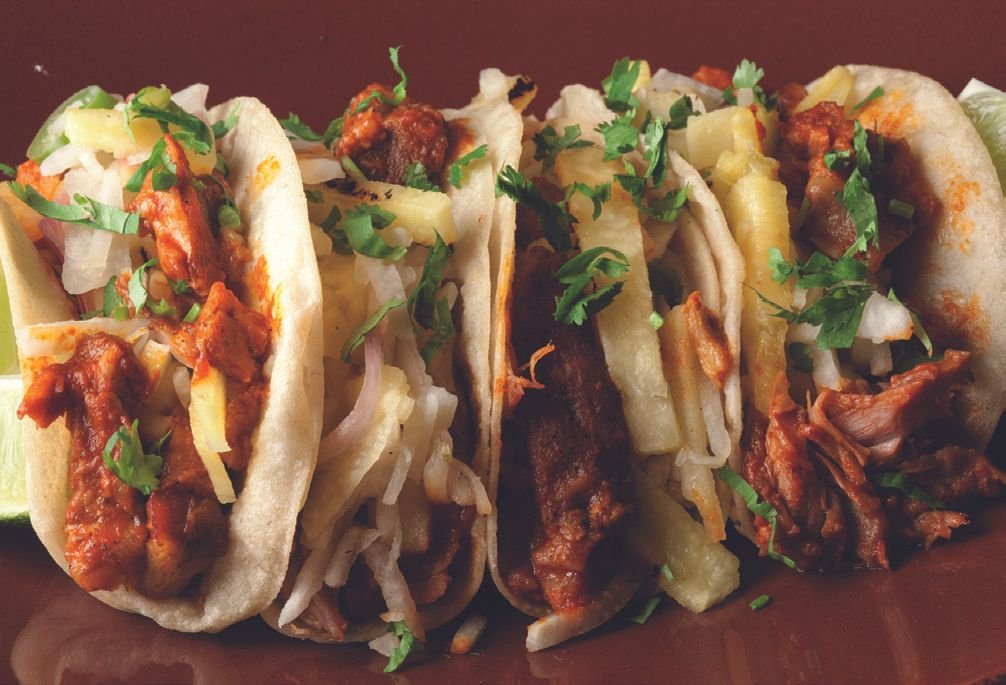Advertisement
Consuming Passions: Pork
9 January 2023 · Consuming passions

The Well Fed Pig by Val Littlewood
Brought up on pig farms in Essex and Kent, Chris Bulow is the creator of Salute the Pig, a website devoted to “the countless joys of porcine delights”. His piece for our Consuming Passions series is naturally on the subject of all things pig-related.
By Chris Bulow
I’ve always loved pigs; the animals themselves, for their sharp intelligence but also as a source of — in my experienced view — the best, most varied, most malleable meat on the planet. If we must eat meat, then let it be meat from animals that we’ve treated kindly, housed and fed well and to whom, at the end, we’ve given a swift and as painless a death as we can.
Of course, pigs have always been the poor-man’s standby, their go-to in times of hardship, of cold, of famine. And yet equally, some of the finest dishes via some of the finest cooks and regions on the planet, have come into my life via this supposedly ‘humble’ animal.
You’ve all grown sick to death by now of hearing the whole “we use the whole thing, waste nothing” mantra only taken up comparatively recently by chefs, cooks, foodies (indeed it would seem, pretty much every person and their dog around the world), but this is an ancient methodology, one that the peasants have always followed, one that’s driven by day to day necessities. You only have to think of the rural Spanish ‘matanza’, a process that, extending over two or three days, starts with the slaughtering of the animal — involving almost all the village or local community — and winds up with the entire “nose to tail” pig having been completely utilised — right down to the gelatine from the boiled trotters — whilst along the way producing the cuts, sausages and charcuteries that they can store and then eat during the next few, lean months.
By way of background and to explain my love of pigs and pork, I should explain that for maybe 12 years or so, right into my mid to late teens, I grew up as the oldest boy in a family of 5 children, housed in various tied properties that came along with my Dad’s job, employed as he was, working on pig farms in Essex and Kent.
And as part of my Dad’s wages, he’d usually get a half pig given him every Christmas, which was supposed to go a little way towards making up for the low pay on offer to farm-hands. It kind of did I suppose and, if nothing else, it provided us with some great pork dishes for the next month or so.
I’m going to track my life’s progress by way of some notable meals, starting with my earliest memory of eating a piece of this pork, cooked by my Mum. She’d handle the traditional Sunday roast and side-dishes with apparent effortless aplomb, and so I’ve chosen for this one — although I never got to eat at the late Tony Bourdain’s “Les Halles” restaurant — his Côte de Porc à la Charcutière as to me it feels this recipe is closest to her in spirit.
Next comes the ubiquitous stew. Popular with all mums; this is probably one of the earliest dishes conceived in all cultures and cuisines around the world, a traditional way to feed a lot of hungry mouths, a fine way of using up any left-overs, tired items, those past their use-by date, alongside any meat you might have, that one can almost magically stretch to feed 2 or 12 or even 20. For this memory therefore, I’m suggesting a recipe by the very wonderful Keith Floyd; his version of Bollito, a peasant-style stew of simmered meats.
The first takeaway dish I ate, indeed one of the only such high-street shop then — the classic English chippie — was fish ‘n chips. And I’d still fight anyone who tried to suggest this isn’t a stone-classic. Even the smallest towns and villages though had first a Chinese then an Indian. Yet as I got older, the range available grew and grew and grew.
Firstly, possibly the first of the US burger chains, Wimpy, Wendy’s, then new Mexican places until after my teens and early 20s, came what seemed to be a huge explosion of choice, such that in most large towns and cities, you can choose now to eat from anywhere in the world. So to remind me of the early found joys of eating outside, maybe after a night out with mates, or to offer a meal to a girl-friend (restaurants not being an option; both of us cash-poor), or simply, even earlier, when my parents had occasional spare money, offered as a Friday treat, here’s Ivy Stark’s Mexican Tacos al pastor (“shepherd style”), which in turn is based on Lebanese shawarma, similar to Greek gyros and Turkish döner kebab. Nothing new under the sun, right?
Do you remember your first taste of cassoulet? I do. It was on a school-trip, a quick hovercraft hop across the Channel, starting at Pegwell Bay (just along the coast from me in Deal), over to Calais, where at lunch-time we stopped off at an undistinguished road-side café, not even a ‘real’ restaurant. I was 12 or 13, no more. I can’t even recall how I got to have this placed in front of me — my French remains so poor that it’s likely I just pointed at a picture — but digging into it was one of those light-bulb moments that others talk about, when your idea of how things look & taste & smell is suddenly, beautifully, totally up-ended. And, of course, being France, we got beer with the meal…
A great recipe for this version of cassoulet, comes as Fabada from Asturias in Spain via a Russian writer, Anya von Bremzen.
Did you know that the price for lard from the Hungarian Mangalitza — a breed reminiscent of the now long extinct Lincolnshire Curly Coat — was quoted on the Vienna Stock Exchange? For a long period in the 18th and 19th Century, this glistening, snowy-white, highly prized product meant they were that important to the economy.
Yet for a long time between the 1960s and 1990s, pork chops in the butcher’s in England stopped coming from breeds with much fat; this idiocy has, thankfully, reverted now, and the joy I find in mouthfuls of such a thick, juicy, charred, fatty pork chop reminds me of summer BBQs in the back garden with Dad, ‘helping’ with the cooking on a primitive grill — no more than some strong chicken wire laid over bricks — balancing sausages, various bits of scrawny old, past it, egg laying chicken, maybe, if lucky, even some slightly dubious (and if truth be told, very tough old) steak, but always star of the show, always, the home-bred, close by farmed, chops.
This recipe from London’s Quality Chop House, uses Mangalitsa pork chops, to great effect.
Living where and as we did, we’d also be able to obtain our ‘own’ bacon, cut from the side of pig, handed over to be cured and hung by the local butcher, then returned to us. The Italian guanciale (“pillow”) bacon is produced from the pig’s cheek or jowl which is another prized, yet under-esteemed and under-used part of this versatile animal. I’ve made my own guanciale at home – a lot… Frittata di Patate e Guanciale is a very simple but delightful recipe to use it in, from Italian writer Oretta Zanini De Vita.
Is there anything more lovely than pork, simply grilled on a stick? I don’t think so. From emigrant Turkish kebabs in Berlin to yakiton in Tokyo or motsu (grilled mixed organ meats) in Kyoto, we've been lucky enough to enjoy outstanding ‘skewered’ meals everywhere. Whilst Middle Eastern şiş often use lamb as their base — for cultural or religious reasons — I’ve found that subbing in pork (whilst still retaining the same marinades and spices) gives you an equally fantastic flavour, so in a grateful nod to any and all countries around the world that use this cooking method, here’s a recipe for Shish Kebab from an Iraqi emigré cook, Nawal Nasrallah, in her beautifully detailed book Delights from the Garden of Eden.
My first encounter with Asian dumplings almost certainly came via the Wong Kei restaurant in London’s Chinatown. A late night ‘garden of delight’ for this provincial lad, often the evening’s end-point, often after late night gig or concert in my “salad days”, in the 1970s. We weren’t a quiet group but then, that whole restaurant was a hubbub of noise, we wouldn’t have stood out at all.
This delicate gyoza recipe is made by chef Nic Watt at Masu, using pork alongside kimchi — which is of course another peasant-made item, where fermenting the cabbage preserves it for storage — so this one covers all my favourite taste bases.
If you are vegetarian or vegan, I both respect and commend that choice. But if you’re not, then you really need to try these recipes. Join in and share in my passion, for all things pig!
Chris’s recipe recommendations
More Consuming Passions
Di Murrell enjoys the many delicious uses for the humble fish, whether fresh or tinned
Drinks writer Laura Hadland on the darkest and most intensely flavored of beer styles, with countless culinary uses
Omani food writer Dina Macki, known as The Pomegranate Queen on Instagram, celebrates her favorite fruit
Sign up for ckbk's weekly email newsletter
Advertisement









